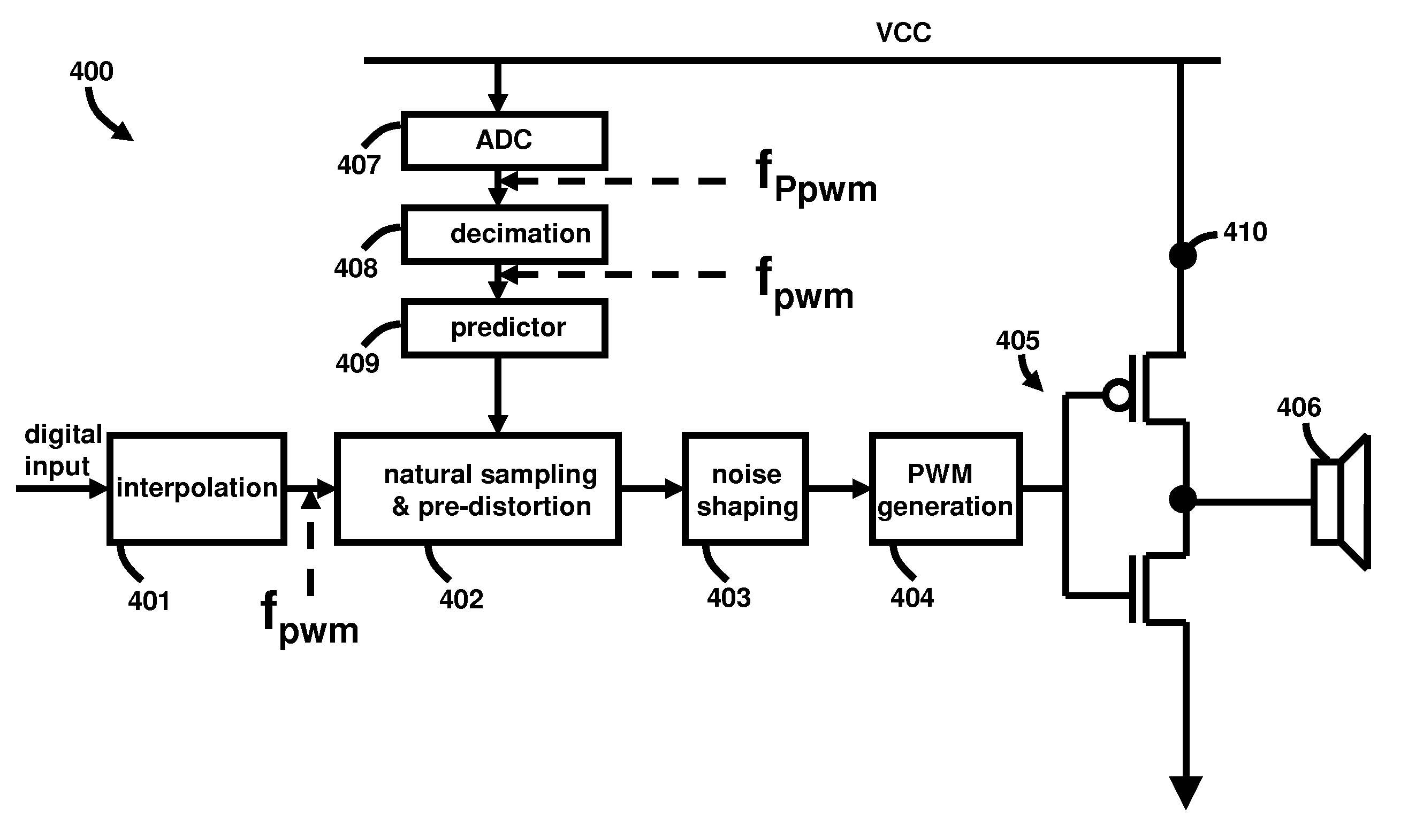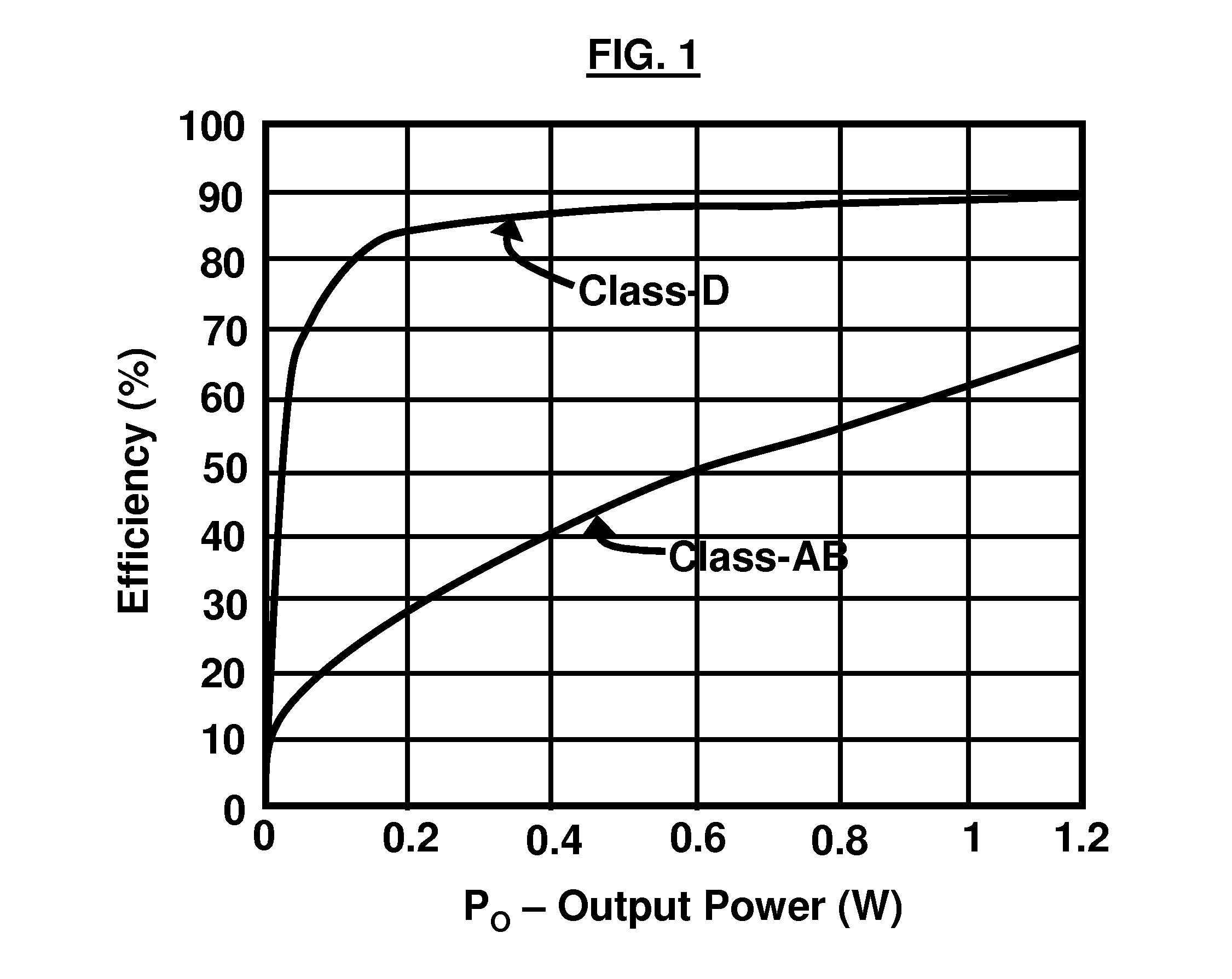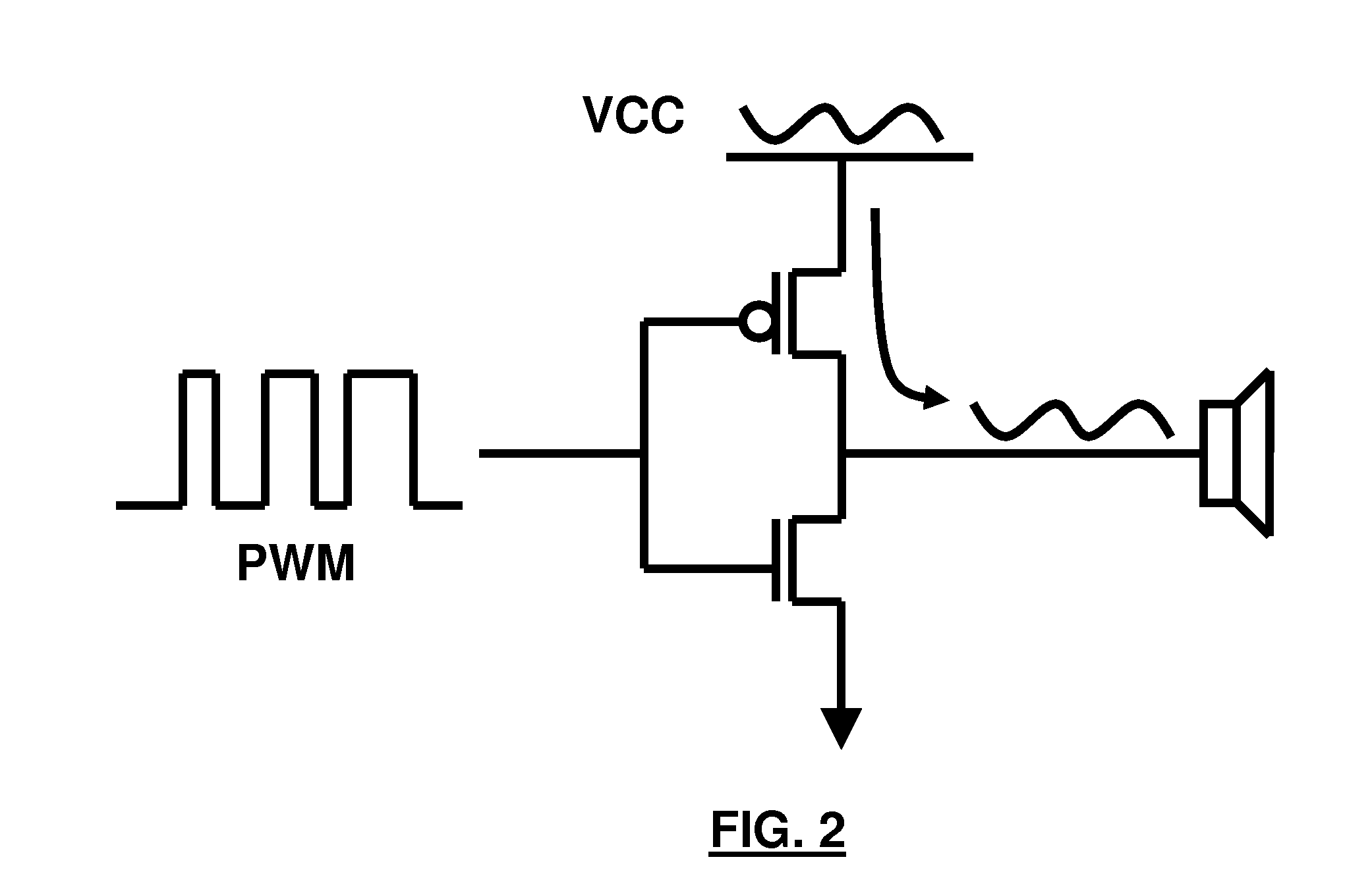[0008]The all-digital class-D audio amplifier may further comprise digital circuitry adapted to provide a PSRR performance by using digital signal processing to pre-distort a natural-sampling point of the PWM wave and by digitizing the power supply ripples using the ADC. Moreover, the all-digital class-D audio amplifier may further comprise digital circuitry adapted to provide reduced THD by using digital signal processing to pre-distort a natural-sampling point of the PWM wave and by digitizing the power supply ripples using the ADC. Also, the input audio signal is preferably digital with sampling rates at 32 khz, 48 khz, 96 khz, and 192 khz. Alternatively, the input audio signal is preferably digital with sampling rates at 44.1 khz, 88.2 khz, and 176.4 khz.
[0009]Preferably, the ADC operates at a frequency that is higher than the PWM wave switching frequency. Furthermore, a natural-sampling point of the PWM wave is preferably pre-distorted in a digital domain through digital signal processing and using the digitized power supply voltage ripples or distortion by the ADC. Moreover, the natural-sampling point may be calculated in the digital domain through digital signal processing by finding a cross-point of a sawtooth waveform of the PWM wave with the input audio signal. Additionally, the pre-distorted natural-sampling point may be calculated in the digital domain through digital signal processing by finding a cross-point of a sawtooth waveform of the PWM wave with the input audio signal with the digitized power supply by the ADC including power supply ripples or distortion.
[0010]Preferably, power supply ripples propagating to the audio speaker and the pre-distorted PWM wave cancel each other resulting in an ideal PWM wave driving the audio speaker as if the power supply ripples were non-existent or much reduced, and therefore gaining PSRR performance for the all-digital class-D audio amplifier. Furthermore, power supply distortion due to operations of electrical components propagating to the audio speaker and the pre-distorted PWM wave preferably cancel each other resulting in an ideal PWM wave driving the audio speaker as if the power supply distortions were non-existent or much reduced, and therefore gaining THD performance for the all-digital class-D audio amplifier.
[0011]Also, the all-digital class-D audio amplifier may further comprise a decimation circuit adapted to decimate digitized power supply ripples at a sampling rate from the frequency that the ADC operates at to the PWM wave switching frequency. Moreover, the all-digital class-D audio amplifier may further comprise at least a third order digital sigma-delta type modulator adapted to shape quantization noise out of the input audio signal. Additionally, the all-digital class-D audio amplifier may further comprise a digital predictor circuit adapted to predict a difference in a value of the power supply voltage at anytime during an immediately subsequent PWM cycle using power supply voltage difference values from one or more immediately previous PWM cycles.
[0012]Moreover, the all-digital class-D audio amplifier may further comprise a PSRR in a range from 20 dB to 80 dB. Furthermore, the all-digital class-D audio amplifier may further comprise a power efficiency of greater than 90% for low-power portable digital audio applications in an approximately range of 10-100 mW.
[0013]Another embodiment provides a system for amplifying an audio signal, wherein the system comprises digital circuitry; an audio signal source adapted to generate an input audio signal; an audio speaker adapted to transmit an amplified input audio signal; a pair of MOSFETs adapted to transmit the amplified input audio signal to the audio speaker; and a class-D audio amplifier adapted to achieve a PSRR in a range of 20 dB to 80 dB, wherein the class-D audio amplifier comprises a PWM wave generator adapted to generate a PWM wave, wherein the PWM wave drives the pair of MOSFETs; an interpolator adapted to receive an input audio signal, up-sample the input audio signal; and down-sample the input audio signal to a PWM wave frequency; a natural-sampling and pre-distortion circuit adapted to (i) generate a pre-distorted natural-sampling frequency point for the PWM wave frequency, and (ii) account for digitized power supply ripples for an input supply voltage used to drive the audio speaker; at least a third order digital sigma-delta type modulator adapted to shape quantization noise out of the input audio signal; and an ADC adapted to digitize the power supply ripples, wherein the ADC operates at a frequency that is higher than the PWM wave frequency; wherein the digital circuitry is adapted to provide a PSRR performance using digital signal processing and by digitizing the power supply ripples using the ADC; and provide a reduced THD using digital signal processing and by digitizing the power supply distortion using the ADC.
 Login to View More
Login to View More  Login to View More
Login to View More 


